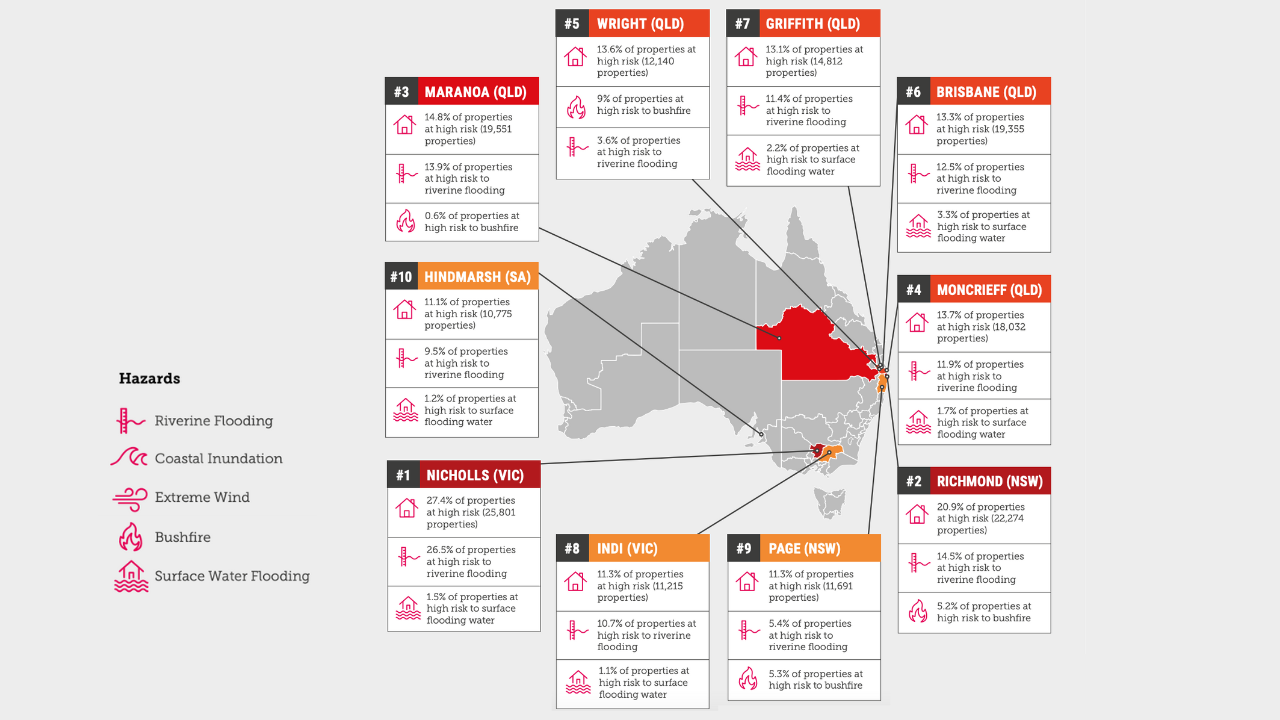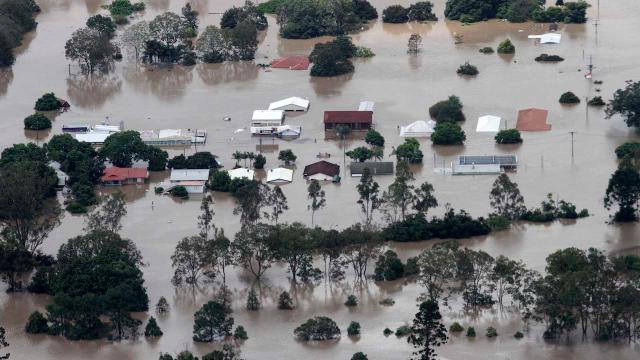Unless we rapidly, and drastically, cut greenhouse gas emissions by 2030, Australia’s Climate Council has warned extreme weather will get much, much worse and result in many homes being uninsurable by the end of the decade.
In a report published today, the Climate Council says that to limit temperature rise to well below 2°C, global emissions need to be halved by 2030. It says there’s a need to get to net zero by 2040 at the latest. It’s not exactly new news, hell, just last month, a report from the Intergovernmental Panel on Climate Change said that in order to avoid the worst impacts of climate change, the world needs to make a serious U-turn over the next three years to curb our emissions. It was a similar rhetoric from the UN’s March report.
But the Climate Council’s report deals an additional blow: it isolates 20 high-risk areas in Australia that are copping it the worst. It declared that Nicholls (Vic), Richmond (NSW), Maranoa (QLD), Moncrieff (QLD), Wright (QLD), Brisbane (QLD), Griffith (QLD), Indi (Vic), Page (NSW) and Hindmarsh (SA) will be uninsurable if action isn’t taken by 2030.

The report says that in these at-risk electorates, 15 per cent of properties (165,646 of them) will be uninsurable this decade. The Council said that by 2030, 40 federal electorates across Australia will have 4 per cent of properties classified as ‘high risk’ and 45 per cent of them are in Queensland. That means one in 25 Australian properties will be effectively uninsurable by the end of the decade.
Curious how bad your area will get? It’s kind of morbid, but the Climate Council has an interactive Climate Risk Map, comprising millions of data points that were analysed by Climate Valuation. You can enter in your suburb, local government area or electorate to discover the risk of fires, floods and extreme wind, based on low, medium and high emissions scenarios and across decades (by 2030, 2050 and 2100).
With the aftermath of the floods still wreaking havoc across the east coast of Australia, and the memory of the Black Summer bushfires, the message to the masses from the Climate Council today is truly heartbreaking.
But what’s something tangible that we can do? A lot of it is up to the government, the report says, with the Climate Council saying it should be high on the priority list of the major parties heading into the 2022 Federal Election. But the first step is acknowledging there’s a crisis, by enabling “swift and deep emissions reductions across the whole of the Australian economy”.
Next up, is to eliminate fossil fuels. A lot of the Climate Council’s report focused on these areas of high-risk, using this as its anchor to discuss resilience efforts Australia could take. The Climate Council said too many Australians live in dangerous locations that put them at higher risk of being impacted by floods, bushfires, cyclones and actions from the sea.
“This is because not enough consideration was given to the risks from extreme weather – including worsening risks from climate change – at the time that planning approval was given,” they wrote.
“Embedding resilience into building codes is a key tool for reducing the risks associated with worsening extreme weather.”
Its final recommendation is that towns, cities and communities must be rebuilt – where appropriate to do so – in a way that takes into account the inevitable future changes in climate and makes them more resilient.
Unfortunately, in some very high-risk locations, this may mean not rebuilding at all.
“Managed relocations must be discussed as an option for some of the most vulnerable and exposed communities,” the report ends with.
Let’s hope action is taken soon.
